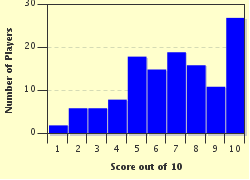Quiz Answer Key and Fun Facts
1. What popular board game's original US edition features the Pennsylvania Railroad as one of its spaces?
2. What symbol was featured in the PRR's logo?
3. What affluent Philadelphia surburban area derived its name from the PRR's first major right of way?
4. What famous PRR passenger train ran from South Station in Boston to Union Station in Washington, DC?
5. What railroad, nicknamed "The Water Level Route", was the arch rival of the Pennsylvania Railroad?
6. What Pennsylvania town was the location of the PRR's main shops and locomotive works?
7. What color were Pennsy passenger trains?
8. Pennsylvania Station (better known as Penn Station), the PRR's main station in Manhattan, was completed in 1910. Larger and busier that the rival Grand Central Station, the building was demolished in 1964 to make way for a major new project. What famous building now sits where the Penn Station concourse building used to be?
9. In 1857 the PRR acquired the assets of the Main Line of Public Works, a canal & railroad project chartered by the State of Pennsylvania. Which one of these assets would eventually be the cause of a major disaster that claimed over 2,200 lives on May 31, 1889?
10. On February 1, 1968, the PRR began a merger process with several other railroads to form the Penn Central Railroad. The merger was anything but a marriage made in heaven. How long did it take from the time of the merger before the Penn Central declared bankruptcy?
Source: Author
maiguy
This quiz was reviewed by FunTrivia editor
Beatka before going online.
Any errors found in FunTrivia content are routinely corrected through our feedback system.

